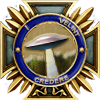No, I was begin facetious. We shitpost around here, right?
Also, that Turing complete remark seemed to have triggered you, as you disregarded that I compared markup to decorating a christmas tree. Which it is, if you think about it for a bit. And that is the real reason it is boring: You structure content and add tags to it so maybe you can find/classify that content again and do something with it. You work with the content itself, not the program to handle content. You explained it quite well in your post, so I am amazed you go to great lengths about Turing completeness. However, you need to know how markup languages work, and you need to learn how to handle that stuff with things like DOM. You can learn the basic idea of markup languages and the usage of DOM in under an hour.
Oh, and don't bring up FORTRAN please: Whoever told you FORTRAN wasn't Turing complete probably never really saw the language. At least the version released in 1957 is Turing complete, and everything from 1953 onwards was still in development. The first iteration had no loops, but achieved iteration with two different GOTO statements. It also wasn't developed as a programming language, but as an "Automatic Coding System" to write assembly for you from the FORTRAN statements. Tailored to the IBM 704 target architecture it had commands for the 704's 727 tapes (READ/WRITE TAPE, REWIND), printer, drum memory (READ/WRITE DRUM) and a punch card recorder. The whole concept of a "higher programming language" just didn't exist back then. Its goal was to allow non-Assembly programmers to develop solutions to solve computations (which were usually done by humans called "Computers").
And that is why over the years FORTRAN evolved into what is just BASIC for engineers and scientists. They don't really know programming but want to write out their formulas so they can run them on a computer. To this day we still have FORTRAN around because a lot of engineering and scientific applications are writtin in it (at least the solver part). The success also came from the needs of NASA for the space race. For example NASA funded the development of the first commercial FEM solver called NASTRAN, which was written in FORTRAN and is used to this day.








